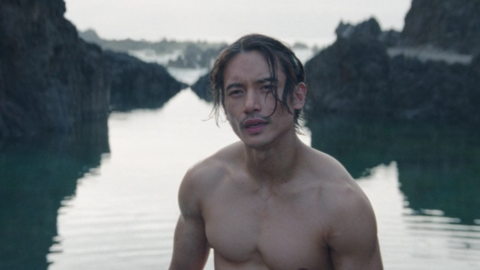Detective shows are tricky to pull off. First, there's the question of whether to lay out the clues in the opening so the audience can figure it out alongside the detective or hold the solution off until the end. Then there's the question of the big detective speech at the end of the case, and how long and detailed the explanation will be: Make it too short and there's no tension, make it too long and it’s no longer entertaining. Thankfully, the anime horror-mystery show Undead Murder Farce has the right balance between entertainment and information, delivering a thrilling and fun whodunit that the audience can solve alongside the main character, while also making the big detective reveals surprising and captivating whether you know the answer or not.
But a good mystery is only part of what makes Undead Murder Farce one of the big discoveries of the season: This is also a penny-dreadful romp with a Victorian all-star cast that The League of Extraordinary Gentlemen movie only wishes it had, as well as a delightfully bonkers Universal Classic Monsters mash with rich worldbuilding and a distinct visual style courtesy of the brilliant director behind Kaguya-sama: Love is War. And did I mention the star detective is the talking disembodied head of an immortal girl?
Undead Murder Farce takes place in an alternate Victorian/Meiji era where supernatural creatures exist alongside humans and, unsurprisingly, tensions are high between the two groups. Tsugaru Shinuchi is a half-oni (a Japanese demon) who accepts to work as the assistant to the immortal disembodied head of Aya Rindo and her loyal servant Shizuku Hasei. For Tsugaru, the partnership is an opportunity to extend his lifetime, while Aya needs Tsugaru's help to find the rest of her body and finally die. While tracking down Aya's body, the two travel through Europe solving mysteries involving supernatural creatures.
Much like the Netflix anime The Great Pretender, Undead Murder Farce is split into three distinct cases that are connected, but relatively standalone. Each has a mini-arc with a satisfying conclusion, a compelling cast of characters, and an emotional layer to the mystery. Then there's the detective. Aya is very much not Sherlock Holmes (she's better, as she herself says in the show), but a more playful kind of detective who makes jokes about her disembodied state. Her dynamic with Tsugaru, the brawny Watson to her all-brain, no-body Sherlock is fun to watch, with both respecting each other even if Tsugaru recognizes he's mostly there to punch things. Aya also gets surprised by the emotional part of the cases, often figuring out the how, but not always the why – and each case is more tragic than it first appears to be.
Each case also ties together, forming a giant web of public domain worldbuilding, On Undead Murder Farce, Sherlock Holmes can fight Frankenstein's Monster in the home of Phileas Fogg while the Phantom of the Opera and Arsène Lupin team up to find a precious gem that leads to a village of werewolves. Both threads – the smaller detective cases and the larger fight against a group of supernatural adversaries led by Professor Moriarty – run parallel without either overtaking the other. What's more, the show effortlessly combines the varying tones that these characters fit in: the tragic, the macabre, the comedic, at times even the erotic. It’s not just the inclusion of classic characters and their tropes that makes Undead Murder Farce click, but the way these tropes and characters are twisted to serve the story and worldbuilding. For example, when the characters first travel to Europe and get involved in a mystery involving a vampire family, we learn that Dracula is dead, and there are attempts at diplomacy between vampires and humans to live peacefully.
Though Undead Murder Farce is a dialogue-heavy show, it’s also full of stylized action scenes. Director Mamoru Hatakeyama storyboards the standout episodes of the season, delivering fight scenes that play with abstract imagery and allegory to make up for limited animation. The finale, in particular, includes a fight set entirely in the dark that uses quick flashing images and popping colors to convey the action. Likewise, the anime constantly uses diopter shots during its more horror-centric scenes to evoke the horror movies that inspired it and create an eerie atmosphere.






